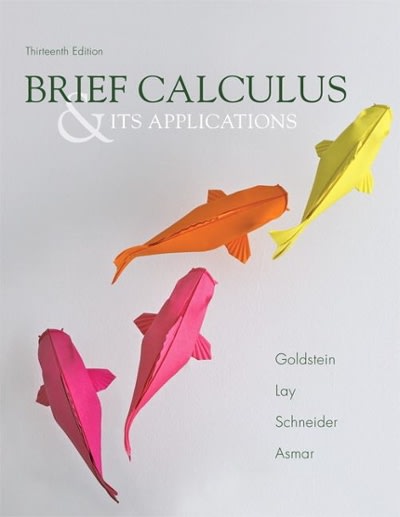Question
1 . A double-blind trial was conducted with 15,828 patients with stable coronary heart disease to test the efficacy of a new drug darapladib compared
| 1. A double-blind trial was conducted with 15,828 patients with stable coronary heart disease to test the efficacy of a new drug darapladib compared to placebo with respect to lowering rates of coronary events. The data in the table below are taken from a secondary endpoint collected in this trial.
* Includes Death from Coronary heart disease, Nonfatal myocardial infarction & Urgent coronary revascularization Reference:https://www.nejm.org/doi/full/10.1056/NEJMoa1315878 Note: The data in the actual trial were analyzed appropriately using time-to-event analyses (not covered in our course) which account for patients dropping out and having varying follow-up times. The analyses requested below for this exam will assume no dropouts and that each person was followed for the same amount of time so that we can use methods covered in SPHG 711. Thus the results requested below are NOT included in the referenced manuscript. 1a. [0 points] Use the information in the table above to complete the following table with counts and percentages in the 2x2 table format.
| |||||||||||||||||||||||||
| 1a. ANSWER | |||||||||||||||||||||||||
| 1b. [1.5 points]Calculate the odds ratioof having a major coronary event in the placebo group compared to the darapladib group. Interpret the ORin the context of this scenario. Provide a 95% confidence interval for the odds ratio. Interpret the confidence interval (including any conclusions we can make regarding the null value being in the interval). An interpretation of a CI should contain the concept of repeated sampling. Recall you have a handout about interpreting a CI correctly. [Note: No need to provide assumptions or conduct a hypothesis test. Just calculate and interpret OR, calculate and interpret the confidence interval as requested. Include relevant computer output or show all calculations.] | |||||||||||||||||||||||||
| 1b. ANSWER | |||||||||||||||||||||||||
| 1c. [3.5 points ]State the numeric value of the proportion of patients with major coronary events in each group. (These are given.) Conduct a hypothesis test that the proportion of patients having a major coronary event is the same in each treatment group. Use a two-sample proportion test for this problem. [Include the usual steps: Check assumptions, state hypotheses in words and symbols, provide the test-statistic, p-value and any pertinent results, interpret the pvalue in language a nonstatistician can understand and state any conclusions. Your answer should include some computer output or calculations.]
| |||||||||||||||||||||||||
| 1c. ANSWER | |||||||||||||||||||||||||
| 1d. [2 point] This scenario has been reanalyzed as a chisquare test. The results are provided below. Interpret the pvalue in the context of the problem. What, if anything, can we conclude based on this analysis? Briefly explain the relationship between the results in 1c above and this problem. [Note: you do NOT need to state or check assumptions, state hypotheses etc. Just address the questions that are asked.] |
Step by Step Solution
There are 3 Steps involved in it
Step: 1

Get Instant Access to Expert-Tailored Solutions
See step-by-step solutions with expert insights and AI powered tools for academic success
Step: 2

Step: 3

Ace Your Homework with AI
Get the answers you need in no time with our AI-driven, step-by-step assistance
Get Started


